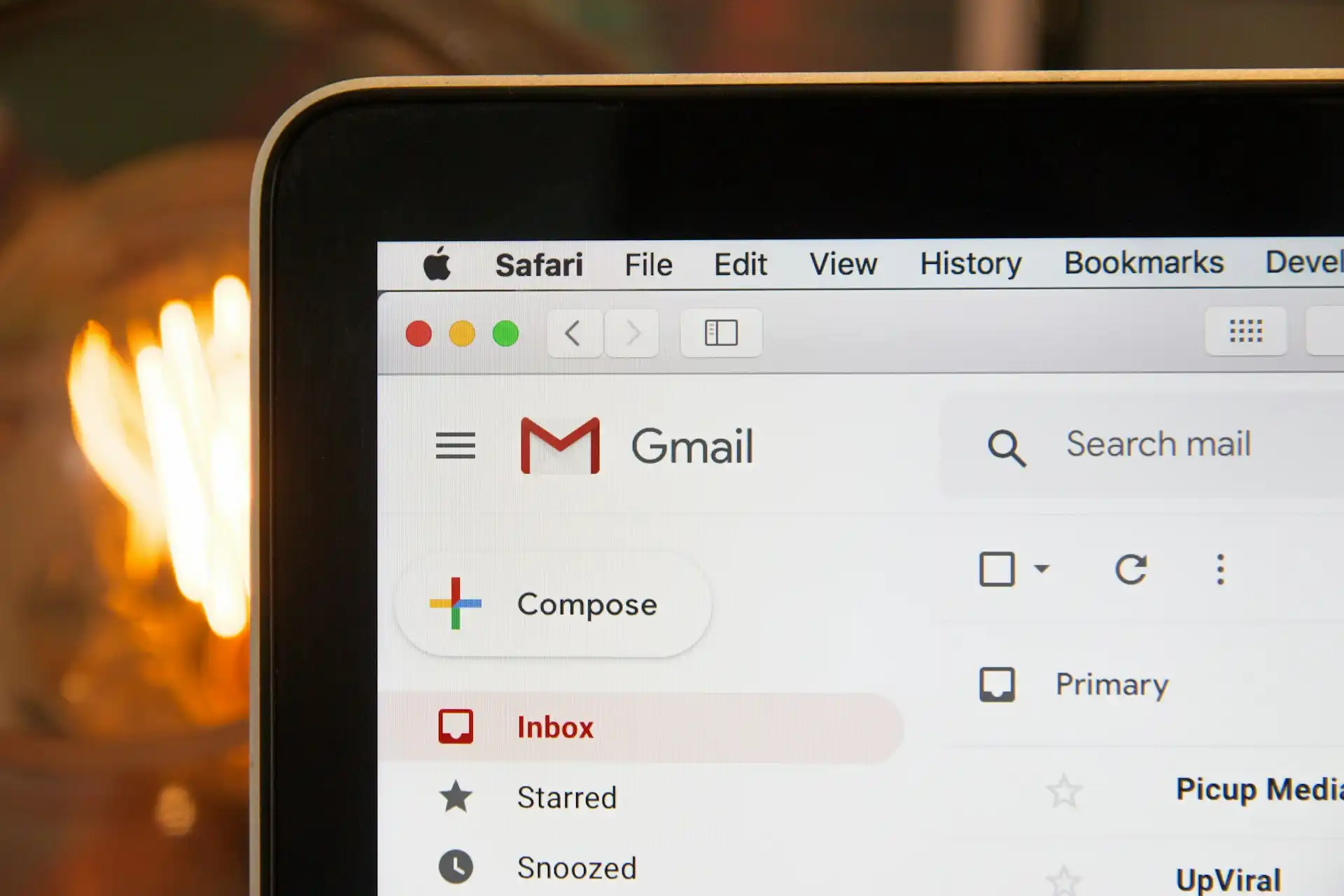Starting a coaching business is exciting but can feel overwhelming. The good news? The U.S. coaching industry is growing fast. The business coaching sector is projected to hit $17.8 billion by 2025, and life coaching was valued at $1.6 billion in 2024, with continued growth ahead. This shows the huge demand for coaching services—great news for you! Whether you’re just starting or looking to scale, marketing is key to connecting with the right coaching clients. There’s no one-size-fits-all approach, so it takes some trial and error.
We’ll explore practical and straightforward ways to market your coaching business, from defining your unique brand to using social media, content creation, and email marketing. These strategies are simple, actionable, and designed to fit into your busy schedule. Offering free coaching calls can also be an effective strategy to showcase your value and build trust with potential clients.
No need to get bogged down in complicated tactics—just real, easy-to-follow advice to help you attract your ideal clients and grow your business at a pace that works for you.
Understanding Your Coaching Business
The first step in marketing your coaching business is identifying your unique value proposition (UVP). This is what sets you apart from other coaches. Maybe you focus on helping professionals transition into new careers, or perhaps you help individuals overcome burnout. Whatever it is, defining your niche and creating a coaching program tailored to a specific audience allows you to speak directly to the people who need your services most.
Start by asking yourself: What problems do I solve? Who benefits the most from what I offer? Take time to reflect on your strengths, your passion, and the impact you want to make. A clear niche will help you position your services effectively and attract the right clients.
Exercises for narrowing your focus:
Write down 3-5 things you’re passionate about in your coaching.
Identify the common challenges your clients face.
Combine these insights to narrow down your niche and define your UVP.
Creating Your Ideal Client Avatar
Once you’ve defined your niche, it’s time to dive into your target audience. This means creating an ideal client avatar (ICA)—a detailed profile of your perfect client. This helps you tailor your marketing to their needs and preferences.
Steps for market research and audience segmentation:
Use surveys or social media to gather information about your target audience.
Look at your current clients and identify common characteristics.
How to tailor your messaging for maximum impact:
When you know who you’re speaking to, you can adjust your messaging to speak directly to their pain points, goals, and dreams. The more specific you are, the easier it will be to connect with potential clients and convince them you’re the right coach for them. Offering free coaching calls can also be an effective strategy to showcase your value, build trust, and attract potential clients.
Building a Powerful Personal Brand

Your personal brand is more than just a logo or a catchy slogan—it’s the story you tell about who you are, what you stand for, and why you’re the right coach for your clients. A compelling narrative can make all the difference in how potential clients perceive you.
How to craft a compelling narrative:
Start by thinking about your journey. Why did you become a coach? What experiences have shaped your approach? Sharing your story not only humanizes your brand but also helps potential clients connect with you on a deeper level. Be authentic—people want to work with someone who is genuine and relatable.
Establishing trust and authority:
To build trust, consistently show up and offer value. Share helpful insights, tips, and resources that demonstrate your expertise. Testimonials and client success stories also play a crucial role in showing that you can deliver on your promises. When you show that you care about your clients’ success, you naturally build authority in your niche. Offering a free coaching call can further build trust and credibility by demonstrating value upfront and providing an opportunity for valuable interaction without any cost.
Visual Branding & Messaging
Your visual branding includes the way your website looks, your social media profiles, and the overall feel of your online presence. It needs to reflect your personality and your message in a professional way.
Key elements of a professional website and social media profiles:
Your website should be clean, easy to navigate, and designed with your target audience in mind. Include a clear call-to-action (CTA) on your homepage, such as booking a free consultation. On social media, your profile pictures, bio, and posts should reflect your coaching style and niche. Use images that align with your brand’s vibe—whether it’s calm and soothing or energetic and motivational.
Consistency in tone, imagery, and messaging:
Make sure that your tone, imagery, and messaging are consistent across all platforms. If you’re approachable and warm in one place but formal in another, it can confuse potential clients. Keep your voice and visuals aligned to build a cohesive brand that people will recognize and trust.
Content Marketing Strategies

Content marketing is essential for building your online presence and attracting clients. Blogging is one of the best ways to create long-lasting content that continues to bring in traffic over time. Focus on writing blog posts that answer common questions or address challenges your target audience faces. Evergreen content, like “How to Build Confidence as a Coach” or “5 Ways to Overcome Career Burnout,” stays relevant and continues to attract readers months or even years after it’s published.
Keyword Research and On-Page SEO
To ensure your content is discoverable, optimize it for search engines. Start by conducting keyword research using tools like Google Keyword Planner or Ahrefs to find terms your audience is searching for. Once you have your keywords, use them naturally in your content—especially in headings, meta descriptions, and the first 100 words. This helps search engines understand your content and boosts your chances of ranking higher.
Video Marketing & Podcasts
Video and audio content are powerful tools for engaging your audience. These formats allow you to build trust and connect with your audience in a more personal way. Whether through a YouTube channel or podcast, creating content that addresses coaching topics can help you demonstrate your expertise.
Tips for Scripting, Production, and Promotion
Keep your videos and podcast episodes short, valuable, and conversational. Focus on good lighting and clear sound, but you don’t need fancy equipment to get started. Once your content is ready, promote it across your social media platforms, email lists, and website to maximize reach and impact.
Webinars and Live Events
Webinars and live events are a great way to connect with your audience in real-time, showcase your knowledge, and address client concerns directly. Attending networking events is also crucial to connect with potential clients and industry peers.
Planning and hosting engaging, interactive sessions:
Choose a topic that resonates with your audience, and promote the event through social media and email, highlighting the benefits of attending. During the session, keep it interactive by asking questions, conducting polls, and allowing attendees to engage with you. This strengthens connections and gives potential clients a preview of your coaching style.
Social Media Marketing

Platform-Specific Strategies
Each social media platform has its own strengths, and to effectively market your coaching business, it’s important to use each one in the way that works best for your niche and audience.
Best practices for LinkedIn, Instagram, Facebook, and YouTube:
LinkedIn: Great for professional networking. Share insightful posts, articles, and engage in relevant groups to establish authority.
Instagram: Focus on visually appealing posts, stories, and interactive features like polls and live streams to connect with followers.
Facebook: Create a Facebook Group to build a community. Offer value, host live sessions, and encourage members to engage with each other.
YouTube: Use YouTube for longer content like tutorials and coaching tips. Video is a powerful way to connect with your audience on a deeper level.
Community Building
Building a loyal following is one of the most valuable assets you can have in your coaching business. Social media is a great tool to create a sense of community around your brand.
Creating groups, engaging in conversations, and fostering a loyal following:
Create private groups on Facebook or LinkedIn where followers can connect. Engage regularly by responding to comments, offering support, and facilitating relevant discussions. Encourage members to share ideas and support each other.
Leveraging User-Generated Content
User-generated content is a powerful way to build social proof and credibility.
How to encourage reviews, testimonials, and success stories:
Encourage satisfied clients to share reviews or testimonials on your website or social media. These can greatly influence potential clients. Feature success stories to showcase the impact of your coaching, and invite clients to post about their experiences, whether through testimonials or milestone photos. This builds trust and expands your reach.
Email Marketing & Lead Generation

Building Your Email List
Your email list is one of your most valuable assets. It allows you to nurture leads and keep your audience engaged. The first step in building your list is to offer something of value in exchange for email sign-ups.
Lead magnets, opt-ins, and landing page optimization:
Lead magnets are free resources offered in exchange for email addresses, such as e-books, checklists, or free sessions. Ensure your lead magnet addresses a specific pain point for your audience.
Opt-in forms should be easy to find and simple to complete. Place them prominently on your website and social media. When designing landing pages, focus on clarity with a strong headline, a brief description, and a clear call-to-action (CTA).
Email Automation & Nurturing Campaigns
Once you have people on your list, it’s time to nurture those leads with a well-crafted email sequence. Email automation can save you time and ensure that your potential clients get the right message at the right time.
Crafting personalized email sequences that convert:
Start with a welcome email that introduces you and your services. Follow up with a series of emails offering valuable content like tips, success stories, and insights into your coaching process. Keep the tone conversational and focused on how you can help subscribers achieve their goals.
Each email should have a clear call-to-action (CTA), such as booking a consultation, signing up for a webinar, or downloading a free resource.
Analyzing Email Campaign Performance
To improve your email marketing efforts, you need to track and analyze the performance of your campaigns.
Metrics to track and strategies for optimization:
Key metrics to watch include open rates, click-through rates (CTR), and conversion rates.
These will help you understand how well your emails are resonating with your audience. If open rates are low, consider testing different subject lines. If your CTR is low, try making your CTAs more compelling or clearer. Continuously testing and tweaking your emails will lead to better results over time.
Organic vs. Paid Marketing: Finding the Right Balance
Organic Marketing Techniques
Organic marketing involves strategies that don’t require a paid budget. These methods rely on creating valuable content, optimizing your website for SEO, and engaging with your audience through social media and community-building efforts. Additionally, understanding the basics of online marketing can help you reach your dream clients by knowing where they spend their time before investing in paid advertising and marketing systems.
In-depth exploration of content, SEO, and community engagement:
Content marketing is one of the most effective organic strategies for attracting and retaining clients. By consistently producing helpful blog posts, videos, and social media content, you build trust and authority in your niche.
SEO (search engine optimization) is key to driving free traffic to your website. Optimize your content with relevant keywords, improve your website’s technical SEO, and create high-quality backlinks to help your site rank higher in search results.
Community engagement is another important aspect of organic marketing. Engage with your followers by responding to comments, hosting live sessions, and actively participating in relevant online communities like Facebook groups or LinkedIn discussions.
Paid Advertising Options

While organic marketing is essential, paid advertising can be a great way to speed up growth and attract clients more quickly. With the right strategy, paid ads can complement your organic efforts and bring in a consistent stream of leads.
Overview of PPC, social media ads, and retargeting strategies:
PPC (Pay-Per-Click): Platforms like Google Ads allow you to bid on keywords and appear in search results. It’s a great option for targeting specific search terms related to your coaching services.
Social Media Ads: Platforms like Facebook, Instagram, and LinkedIn offer targeted ads to reach users based on demographics, interests, and behaviors. These ads can drive traffic to your landing pages or generate leads directly.
Retargeting Strategies: Retargeting ads help you re-engage visitors who have already interacted with your website or social media. These ads can keep your coaching services top-of-mind and encourage them to take action.
Budgeting and ROI
When it comes to paid advertising, it’s crucial to set a clear marketing budget and track your return on investment (ROI).
How to set a marketing budget and measure performance effectively:
Start by determining how much you can afford to spend on marketing each month. Divide this budget across your organic and paid efforts. Monitor key metrics like click-through rates, conversions, and the cost per lead to evaluate the effectiveness of your ads. If your ads aren’t delivering the desired results, adjust your strategy or experiment with different ad types.
Networking, Partnerships & Collaborations

Strategic Networking
Networking is a crucial part of growing your coaching business. It’s about connecting with the right people who can help you expand your reach and open new opportunities.
Tips for leveraging professional networks and local events:
Start by attending industry-specific events, workshops, and conferences—either virtually or in-person. These events provide excellent opportunities to meet potential clients, collaborators, or mentors. Don’t forget to engage with local groups and organizations that align with your niche. Networking isn’t just about handing out business cards—it’s about building meaningful relationships and showing genuine interest in others.
Collaborations & Influencer Marketing
Partnerships can amplify your reach and bring credibility to your brand.
Partnering with industry influencers and guest posting opportunities:
Collaborating with influencers in your industry can expose you to a broader audience. Look for coaches or thought leaders who share a similar audience and explore co-hosting webinars, guest blogging, or cross-promoting on social media. Guest posting on relevant blogs is also an excellent way to showcase your expertise and link back to your website, driving traffic and increasing your visibility.
Building and Leading Communities
Building a strong community around your coaching business can foster loyalty and engagement.
Strategies for establishing online forums, Facebook groups, or mastermind circles:
Creating online spaces like Facebook groups or mastermind circles allows your clients and followers to connect, share experiences, and support each other. It’s also an opportunity for you to offer exclusive content, run live sessions, and lead discussions that add value to your community. The key is to foster a supportive environment where members feel safe and motivated to grow, both personally and professionally.
Tools, Technology & Analytics
Essential Marketing Tools
Using the right tools can significantly improve your efficiency and help you manage multiple aspects of your marketing strategy seamlessly. From tracking leads to creating content, there are several tools that can simplify your process.
Overview of CRMs, analytics, scheduling, and content creation tools:
CRMs (Customer Relationship Management systems): Tools like HubSpot, Online Business Automator, or Salesforce help you manage client information, track interactions, and automate follow-ups. This ensures that no leads fall through the cracks.
Analytics Tools: Google Analytics and similar tools track website traffic and user behaviour, helping you understand where your visitors come from and which content resonates most.
Scheduling Tools: Platforms like Buffer, Hootsuite, or Later allow you to plan and schedule your social media posts in advance, saving you time and ensuring consistency across channels.
Content Creation Tools: Tools like Canva and Adobe Spark simplify the process of creating visually appealing graphics, while platforms like Grammarly help ensure your written content is error-free.
Automation & Integration
Automation is a game-changer for time-strapped business owners, enabling you to focus on what matters most—coaching your clients.
How to streamline your marketing efforts using technology:
Marketing automation tools like Mailchimp, ActiveCampaign, and Zapier allow you to automate your email sequences, social media posts, and lead generation processes. For example, once a user subscribes to your email list, you can automatically send them a welcome email and follow-up sequence, ensuring a smooth and personalized experience.
Integration tools like Online Business Automator and Zapier connect your various platforms (CRM, email marketing, social media, etc.), making sure they work together seamlessly to save you time and reduce manual effort.
Measuring Success
To optimize your marketing efforts, it’s essential to measure and analyze the effectiveness of your campaigns.
Key performance indicators (KPIs) and tips for data-driven decision making:
Focus on key metrics like conversion rates, email open rates, website traffic, and social media engagement. These will help you determine which channels are driving results and where adjustments are needed. Regularly reviewing your analytics allows you to refine your strategy, ensuring that you’re always moving in the right direction.
By making data-driven decisions, you can allocate your resources more effectively, improve underperforming areas, and scale your coaching business efficiently.
Creating Your Actionable Marketing Roadmap
An actionable marketing roadmap is essential for staying organized and on track with your strategies. Breaking down your overall goals into manageable tasks will make the process less overwhelming.
Prioritized checklist and timeline for implementing strategies:
Start by defining both short-term and long-term marketing goals. Break these down into actionable tasks. For example, to increase your social media following, tasks might include creating a content calendar, scheduling posts, and engaging with followers daily.
Create a timeline with specific milestones, such as launching a lead magnet or running paid ads. Prioritize tasks based on their potential impact—focus on building your email list first, as a strong list will maximize the effectiveness of your ad campaigns.
Tracking Progress & Adjusting Strategies
Once your marketing efforts are underway, it’s important to regularly assess how well you’re performing and be willing to adjust your strategies as needed.
How to monitor performance and pivot based on results:
Use analytics tools to track metrics like website traffic, email open rates, and social media engagement. For example, if your blog posts are driving significant traffic but your email open rates are low, you might want to test different subject lines or optimize your email content.
Set aside time each month to evaluate your progress and adjust your roadmap as necessary. If a certain strategy is working well, double down on it. If something isn’t yielding results, pivot and try a new approach. Regular adjustments will keep you on course and prevent wasted effort.
Conclusion
Marketing your coaching business doesn’t have to be overwhelming. By understanding your niche, building a strong personal brand, and leveraging a mix of organic and paid strategies, you can attract and retain clients effectively. Remember, consistency is key—whether you’re creating valuable content, engaging on social media, or nurturing your email list.
As you implement these strategies, keep in mind that success takes time. Stay focused on your goals, track your progress, and adjust your efforts as needed. Your marketing roadmap will help guide your efforts, but it’s your passion and dedication that will drive long-term success. If you’re searching for advice on how to market a coaching business, these steps will give you a solid foundation.
If you need help with SEO, SassandSEO offers SEO services tailored for coaches and an SEO course to help you grow your business online. Subscribe for more tips and resources to thrive in the coaching industry.
Check out our blog on SEO for coaches for more information on how to improve your online profile. We have useful tips and strategies to help your website rank higher and connect with more clients.
Frequently Asked Questions (FAQs)
1. How do I define my coaching niche?
To define your niche, focus on your expertise and the specific problems you can solve. Research your target audience’s needs and interests to refine your focus and stand out in the market.
2. What’s the best social media platform for coaches?
LinkedIn is great for professional networking, while Instagram works well for sharing personal stories and visual content. Choose platforms where your target audience is most active.
3. How can I get more clients for my coaching business?
Use a mix of content marketing, social media engagement, and email marketing. Offering free resources like webinars or e-books can also attract new clients.
4. Is SEO important for coaches?
Yes, SEO is essential for increasing visibility online. By optimizing your website and content, you can attract more traffic and potential clients.
5. How can I improve my coaching website’s performance?
Make sure your website is user-friendly, mobile-optimized, and includes clear calls to action. Regularly update it with valuable content and optimize it for SEO to improve search rankings.





